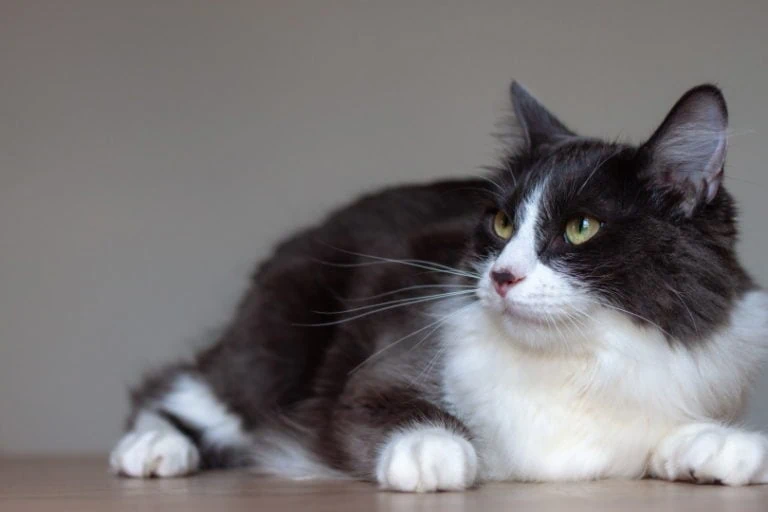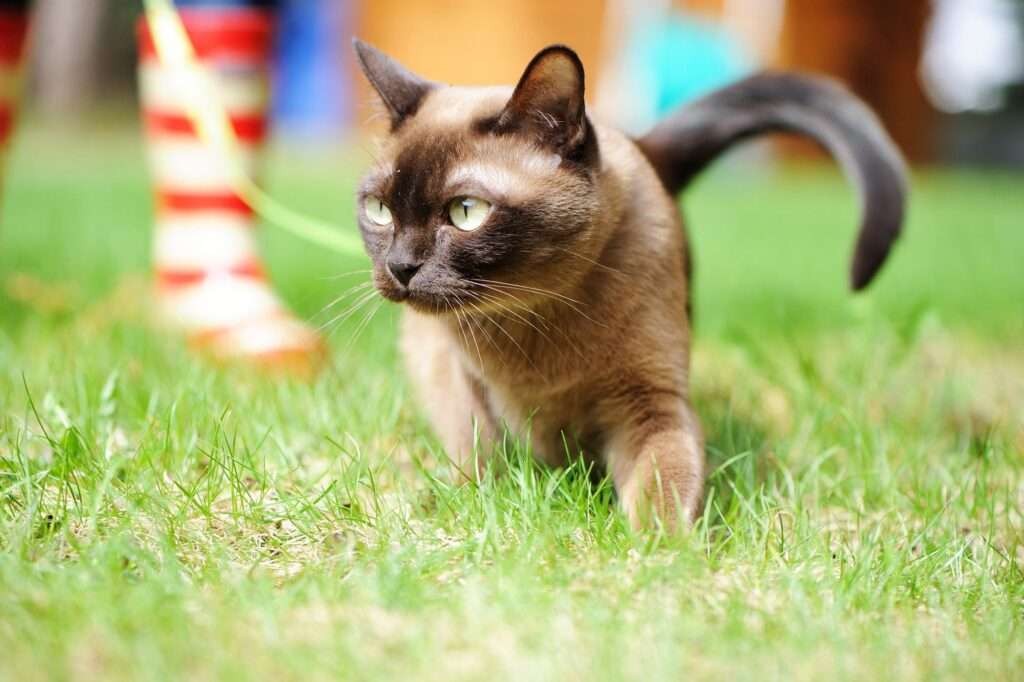
Description
Size: 10-16 pounds
Technically speaking, the Domestic Medium Hair Cat isn’t just one breed; rather, the term refers to a type of cat that contains a number of breeds. However, they are related to both domestic shorthair and domestic longhair cats. Domestic medium-hair cats will still have shorter hair along their spine, but the rest of their hair, especially around their tail and neck, may start to look fluffier and slightly longer.
Origin and History
It is possible to date the introduction of domestic cats to the United States of America to the early 1600s. The Pilgrims attracted our modern feline friends and the journey in an effort to solve a rodent problem in their ships. Several generations of crossbreeding later, the Domestic Medium Hair was created. These days, this type of cat can be found worldwide in cat colonies, families, and squirrel populations.
Behavior
Activity Level: high
Social Needs: playful, friendly, and easy-going
Domestic medium-hair cats have a variety of personalities and temperaments due to their mixed breeding. Some cats are quieter or more independent, but the majority are lively, amiable, and laid-back.
As Pet

Food & Diet Requirements
The DMH does not have any particular nutritional requirements because of their breed alone. DMHs benefit from a balanced diet rich in protein and other necessary vitamins and minerals, just like all other cats do. Because cats are obligate carnivores, they require nutrients that are only present in animal food. Keep an eye out for commercial cat foods with actual meat listed as the first ingredient. Since they will be used in greater amounts than those listed lower on the ingredient list, the next four ingredients should also be of a high quality.
Ask your veterinarian what the optimum diet would be for your DMH’s particular needs if they have any health issues. For instance, cats who are overweight should consume fewer calories to avoid becoming obese. Diabetes patients require a diet that is higher in protein and lower in carbohydrates.
Exercise
Many cat owners overlook the need of exercise when caring for their pets. Physical activity not only satisfies your cat’s innate hunting instincts but also helps them maintain a healthy weight and find constructive ways to release their pent-up energy. Though not all DMH cats will have these personality qualities, many of them are lively and active.
Every cat-owning home ought to have at least one cat tree for the cats to climb and play on. Additionally, you should spend money on a variety of cat toys to determine which ones fit your cat’s personality the best. While some people adore feather wand toys, others go ballistic over springs or balls. Some people while being adored by others might dislike electronic toys. If your cat doesn’t have a playmate among the other family pets, set aside some time each day to engage in some playful interaction with them.
Grooming
Although the DMH cat’s grooming requirements are less rigorous than those of its long-haired siblings, you will still be required to fulfil your obligations as a cat parent by helping them with grooming on a weekly basis. DMHs should have their thick, double coats brushed at least once a week to avoid tangles, skin rashes, and fur matting. During the shedding season, you might need to commit to brushing more frequently.
Proper grooming for your cat can also decrease ingesting less hairballs. Hairballs are not only uncomfortable for you, but they can also be a severe health risk if they become too big and cannot be passed through the mouth.
Table





